New Work: Nevin Aladağ (7. December 2019 – 7. June 2020)
New Work: Nevin Aladağ, SFMoma, 2019
What if a mandolin, a bass, and a guitar all shared a single body? How would it sound if they were then joined with drums, chimes, and didgeridoos? Nevin Aladağ frequently uses music and musical instruments in her sculptures, collages, performances, and videos to consider the ways identities are made and communities are formed. The series Resonator combines musical instruments from around the world as abstract geometric forms to create new sounds, accompanied by wall hangings from her series Social Fabric. The sculptures bring together elements of disparate heritage, inspiring wonder and curiosity as they engage themes of transformation and belonging.
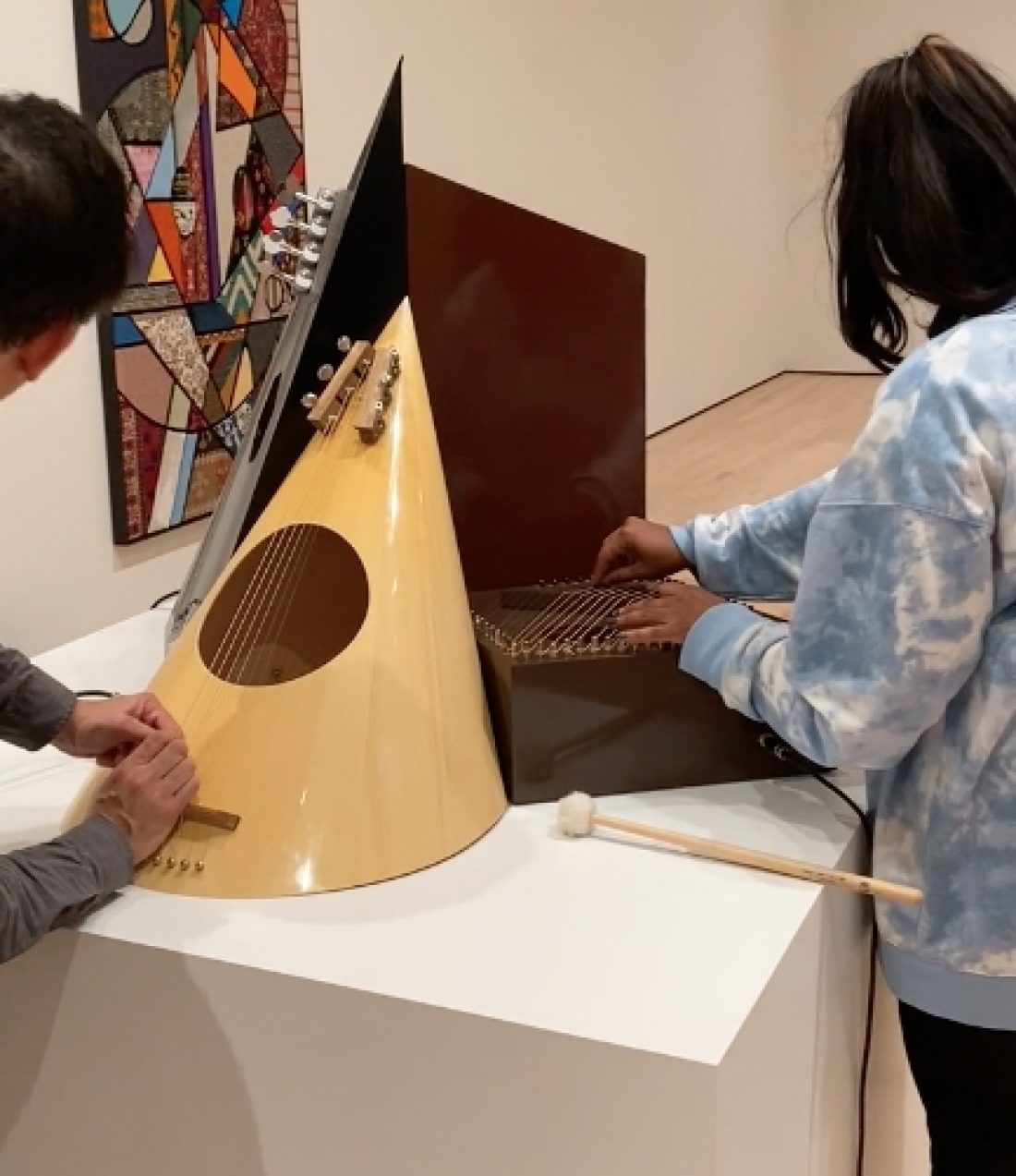
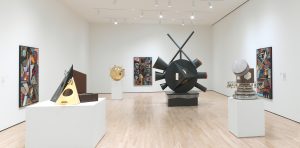
(photo credit: Katherine Du Tiel)
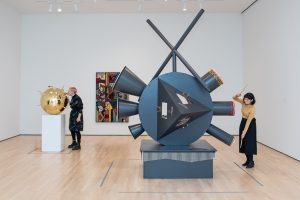
(photo credit: Adam Jacobs)
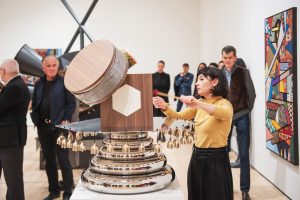
(photo credit: Adam Jacobs)
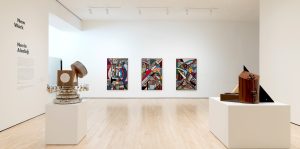
(photo credit: Katherine Du Tiel)
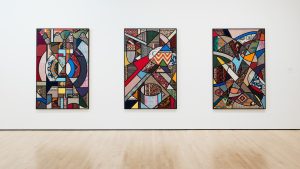
(photo credit: Katherine Du Tiel)
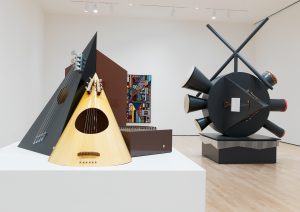
(photo credit: Katherine Du Tiel)
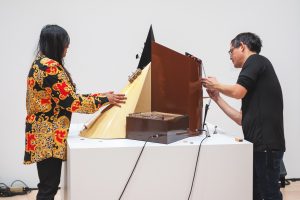
(photo credit: Adam Jacobs)
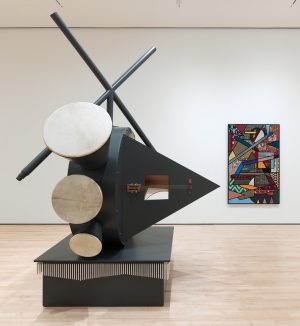
(photo credit: Katherine Du Tiel)
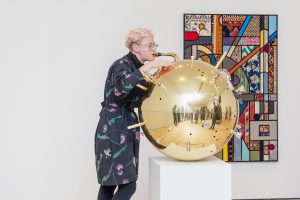
(photo credit: Adam Jacobs)
Taking an expansive view of kinship, Resonator incorporates components of musical instruments into heterogeneous sculptures capable of making sound. The first and largest work from the series, itself titled Resonator, 2018, juxtaposes different sections of the orchestra—as well as multiple geographies and traditions—to produce a single complex yet unified form. Just over ten feet tall, it joins string, percussion, and wind instruments: A hollow horizontal cylinder radiates a variety of drums, while a pyramid mounted to its face brings together the strings of a mandolin and bass and acoustic guitars. The relationships among the work’s discrete parts and the ways they fit and sound together challenge and expand their individuality and their sonic potentials.
With the didgeridoos reaching skyward, the structure resembles a beacon—a tower of transmission for the polyglot sounds of a hybrid social and cultural order. By recalling an architectural construction, the work and its location become a site, its emission and amplification of sound beckoning people forth, gathering a community, perhaps marking a time or an event.
The Resonator series also addresses the complexity of belonging. Drawing on the legacy of assemblage - artworks assembled from found objects - the sculptures suggest conditions of rupture, dispersion and displacement. Inspired by the multipart structure of the first Resonator, the three other works in the series created for this exhibition combine found and manufactured instruments from different traditions but the same family - wind, string, and percussion, respectively. These pieces dismantle the sovereignty of a single resonating body and reimagine the possibilities of form through unexpected combinations. They highlight common features through a simplified vocabulary of circles, squares, triangles, and other elemental shapes. Resonator Wind is a shiny brass sphere with found mouthpieces from various wind instruments - pan flute, flute, tuba and saxophone - protruding from its reflective surface. A hexagonal steel agogo serves as the base for Resonator Percussion, which is topped by a cube of geometric, leather-covered drums and a bell skirt. A string quartet - bass guitar, acoustic guitar, cello and zither - forms Resonator Strings. By gathering instruments from around the world and assembling each type with other members of its scattered musical family, these smaller Resonator works highlight a shared history of sound-producing objects across time and space.
The sculptures explore both the apparent contradictions and the fluidity between marking a place and being on the move. The physical phenomenon of sound does not adhere to borders; it travels, bounces, and echoes through space and material. As the artist and theorist Brandon LaBelle has noted, “Sound, in moving away from a source, to circulate and propagate through environments, and through matters and bodies, is deeply linked to expressions of migration and transience.“ Music is among the most mobile forms of culture, as melodies and songs are carried across borders with bodies and through broadcast or recordings. Aladağ thus literalizes the mingling of music practices and traditions through her creation of structures that bring together instruments from various backgrounds. The idea of belonging takes root not only through the recuperation of disparate parts into unified material objects but also through filling, even exceeding, a space with sound.
By definition, the strings, drumheads, and hollow bodies that compose these sculptures are all resonators, elements that either generate or amplify sound. The artworks are responsive entities, not passive objects, and when plucked, stroked, strummed, or puffed into, they answer with vibrations. They possess an enchanting power to instigate interaction, drawing performers to explore and experience their noises. Tapping into a multiplicity of senses, including visual, aural, and tactile, they compel musicians to improvise choreography as they physically negotiate the works. These relationships among individual parts and between performer and sculpture are intertwined with Aladağ’s sense of play. Play can be understood as a social activity, carried out in a group on a path of shared discovery, with no given rules or stated objectives. The sculptures invite play as a social model for navigating a complex world.
Excerpts from the essay by Rachel Jans, December 2019








